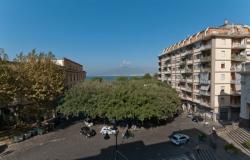For the people of Parma, the night of June 23rd (the summer solstice) is a second secular Christmas Eve: it is the “äd san Zvàn” vigil. The protagonists on the table change: the anolini are replaced by herb tortelli. And, if Christmas Eve (winter solstice) is represented by the «galabrùzza» on the holly, the magical night of San Giovanni is characterized by the «rozäda» which rests on the walnuts which, properly processed, will give life to the balsamic nocino. It is also the night of deception but, above all, of witches who, as per ancient custom, dance around a walnut tree on this very night. Yes, the witches.
In «pramzàn», as Guglielmo Capacchi specifies in his extraordinary «Dizionario italiano – parmigiano» (Silva editore), the witch is «strìa», «bórda» (who frequents dark places such as cellars, basements and attics), «lücabaža» (nocturnal entity in the woods that makes travelers lose their way by making them glimpse a light). When the grandmothers told the ancient “tales” to their grandchildren, they never failed to tell the little ones about the terrible deeds of the evil witches who would come down the chimney or hide in the most hidden corners of the house if the children had thrown a tantrum. Now talking about witches makes you smile a little even if, nowadays, evil hasn’t changed compared to the times of witches. On the contrary!!! However, once upon a time, witches truly instilled fear in adults and children. In fact, in the countryside, mothers absolutely did not want their children to play in the shade of a walnut tree as her diabolical negative influences would not have allowed them to grow up and would also have afflicted them with “mäl dal simiòt”, i.e. rickets. And, always under the walnut tree, clothes should not be hung out to dry, otherwise they would be imbued with evil influences. All these fears were dictated by the fact that the witches, on the magical night of San Giovanni, had the habit of dancing around a walnut tree.
Did witches fly? It seems so, like owls, owls and bats. In an ancient talisman there is talk of a magical ointment with which the witches would spread themselves by pronouncing the arcane formula «I anoint myself with this ointment that will carry me quickly like the wind and in an hour you have brought me and at the cockcrow you brought me back.” To protect the chestnut groves from the wrath of witches in some Apennine villages on the border between Parma, Reggio Emilia and Lunigiana, on the night of San Michele (29 September) people gathered at dusk in the small square. A procession took place, complete with torches, through the streets and through the chestnut groves in order to exorcise them through fire from the danger of being cursed by witches. To prevent the hail, hoped for by the witches, from ruining the harvest, at the first signs of storm clouds, it was customary to ring the bells «to break the air», by doing so, the «storm» would be removed while instead for the Vigil of At Christmas, «soca äd Nadäl» («Christmas») was burned, a large piece of wood whose remains were preserved and displayed on the threshing floor to protect fields, stables and chicken coops from evil and witchcraft. Some confuse witches with healers: our «medgón’ni». Nothing could be more wrong and offensive towards these psychics than the fact that the witches caused evil, while the “healers”, on the other hand, and the name itself is eloquent, tried to cure it with their empirical methods and, moreover, they tried to remove the evil eye. The Parma writer Mario Ferraguti dedicated an interesting book “The hare and the moon” (published by Exòrma in October 2023) to the “medgón’ne”.
Which witches from Parma, or alleged witches, ended up at the stake? Let’s look at some stories. Let’s start with Claudia Colla, daughter of the Parmesan Camillo Colla and Elena Torti, descendant of a notable family from Castell’Arquato, wealthy, but not noble. Claudia, at fifteen, met Ranuccio I Farnese, fourth Duke of Parma and Piacenza, fifth Duke of Castro, son of the great leader Alessandro Farnese and Maria D’Aviz. His reputation is not the best, he is known as a diabolical, superstitious, suspicious man, confiscator of other people’s property. The meeting between the two takes place during a party in the Duke’s residence, the castle of Gragnano Trebbiense, a few kilometers from Piacenza. Claudia is young, beautiful and intelligent. It is difficult to remain indifferent to her attractiveness. Ranuccio notices her immediately, falls in love with her and sees in him a man who can make a difference in her life. Claudia’s mother, Elena, also does everything to make the story serious and important. In short, Claudia becomes Ranuccio’s secret lover and their clandestine meetings become more and more frequent.
Claudia, with her parents, moves to the Doge’s Palace, with courtiers and nobles who, reluctantly, given their origins, are forced to consider them their equals so as not to displease the Duke. Claudia’s life flows peacefully, she becomes pregnant twice, giving birth to healthy and strong children. She continues to hope that one day the Duke will decide to marry her, to recognize her children as his own, as heirs of the Farnese house, she continues to dream of the security that a noble title can give her. But the turning point for the girl came in 1599, when, for reasons of state, Ranuccio decided to marry Margherita Aldobrandini, niece of Pope Clement VIII. Margherita is not beautiful, in fact she is ugly and sickly, but she is very rich and influential. And Ranuccio likes this. Her power is her lifeblood. Within a short time, the first problems related to the possibility of having children emerged. Their first born was born on August 8, 1602. He survived for a few hours. The following year, Margherita is pregnant again, this time she gives birth to a female, who dies in a few days. Ranuccio is furious. There is no peace. Two healthy bastards. Two legitimate children dead.
How can it be so bad luck? The events that happen afterwards are certainly not the happiest. Two subsequent miscarriages and, finally, a baby, Alessandro, who manages to survive. But the joy does not last long because the little boy is deaf and dumb and epileptic, a disease inherited from his father. After an initial estrangement from the Palazzo, Claudia tries to convince Ranuccio to resume the relationship, but above all to recognize the children he had with her. The Duke gives in to Claudia’s flattery and starts visiting her again at night.
In a short time Ranuccio’s health worsens. He still has bad luck. He suffers from many pathologies and begins to hear and see things that are only in his head. The best doctors in the area arrive at the castle of Gragnano, called by Margherita. Nobody knows what happened, nobody understands what triggers the Duke’s madness. Nobody knows, but Ranuccio has no doubts, he is the victim of a spell, a curse has suddenly seized him, making him a slave to the ghosts that populate his mind.
On April 27, 1611, Ranuccio’s guards knocked on Claudia’s door and took her children away. She is imprisoned in the basement of the castle and, at the behest of Ranuccio, she is accused of witchcraft for the ailments caused to her and for the death of her children with Margherita. Driven by the suffering of incarceration and the violence she suffered in prison, she confesses that she is a witch. To her words are also added those of the witnesses who confirm the woman’s wickedness and her relationships with the devil.
Among the texts, Antonia Zanini, an apprentice witch. The fire will mark the end of Claudia and her mother Elena. Legend has it that Claudia’s spirit still wanders, without finding peace, in the castle’s basement.
Among the protagonists of the «Dizionario Biografico delle Parmigiane», a very interesting volume created by the Parma journalist and writer Fabrizia Dalcò, there is Alina. She was a witch (or, rather, she was considered one). In 1279 the Tribunal of the Inquisition condemned her to the stake: she was burned alive on the gravel of the Parma stream: the «Giära». C. Zennoni also talks about her in «Condemned to death in Piazza Ghiaia, theater of a market», published by Mup in 2003. The same fate befell another Parma woman, Donna Oliva, suspected of witchcraft and burned at the stake in 1337 for the simple fact that, as a follower of Francis, he preached poverty. It is said that her death led the common people to coin the term “brùza the olive” which was then adapted to other situations which still had to do with the evil eye and people who bring misfortune.
Lorenzo Sartorio





